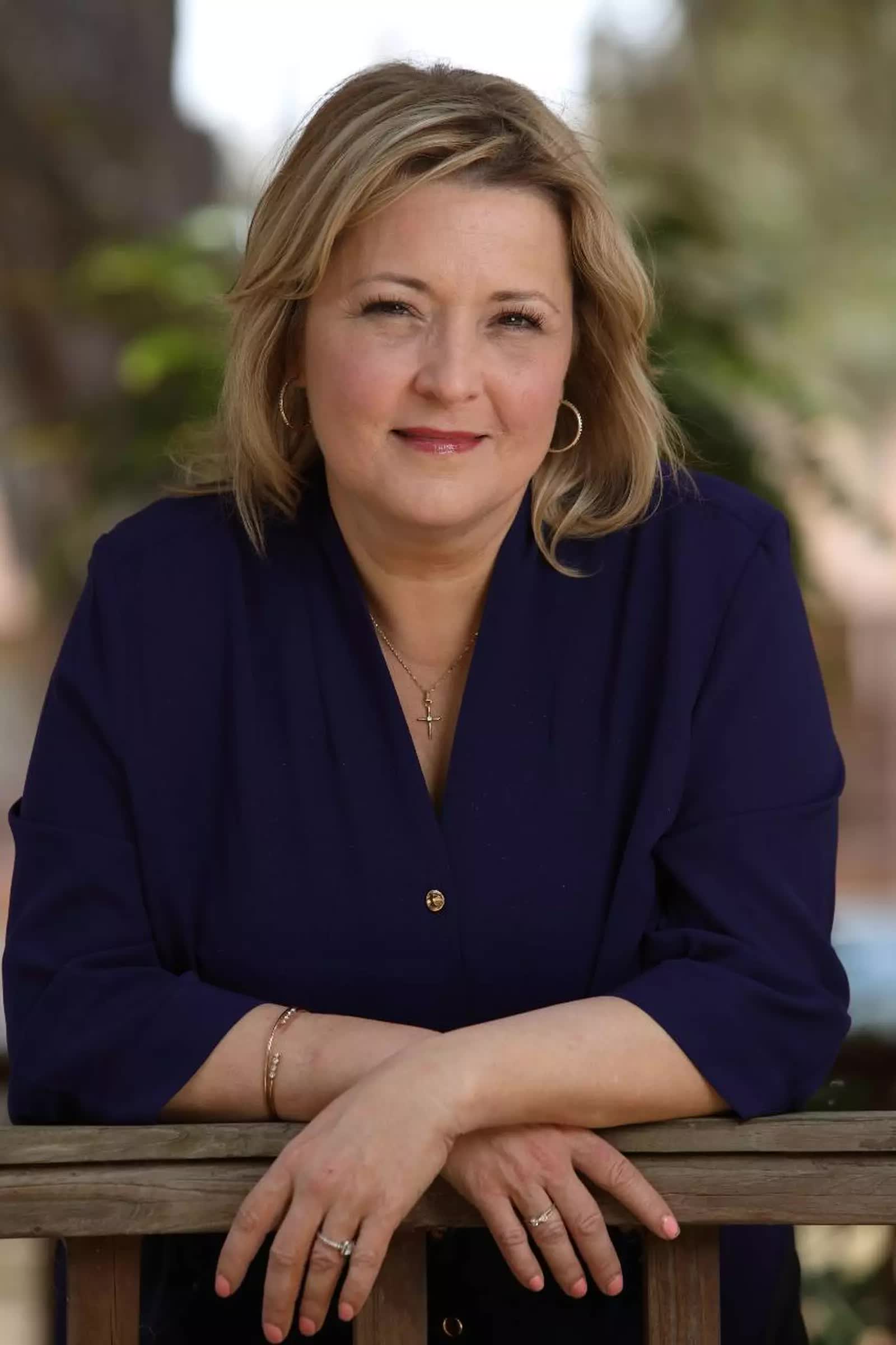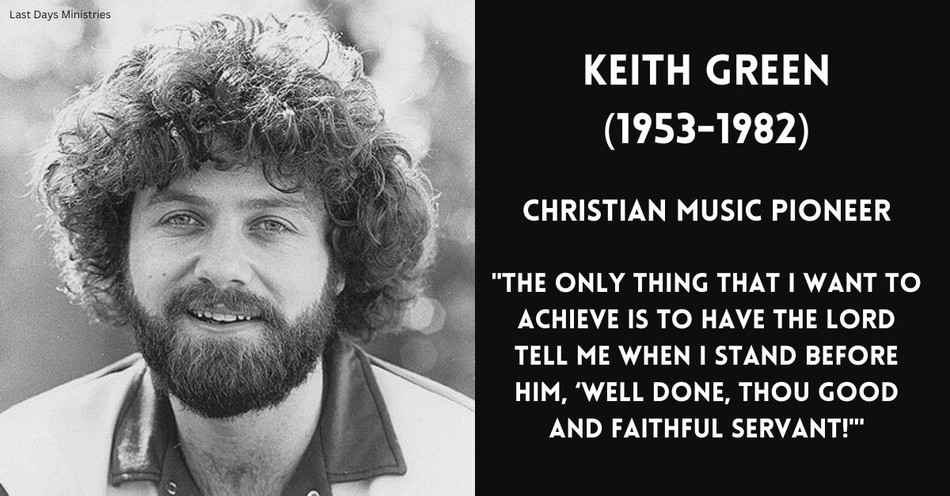History is full of great men of the faith who were born into strong Christian families and carried a string of letters behind their names that prove they knew a thing or two about theology. But rarely do we see the Almighty pluck a confused young man from the street and fill him so full of Godly wisdom, love, and power that his success can only be attributed to the hand of God. Keith Green was such a man.
This year marks 40 years since Keith’s untimely death, and God continues using his music, uncompromising faith, and surrendered life to impact the world for Christ.
10 Key Events in the Life and Ministry of Keith Green
1953: Keith Gordon Green was born in Sheepshead Bay, NY, on October 21, 1953. The family relocated to the San Fernando Valley in California a year later. From the moment Keith could walk and talk his bold personality, musical talent, and zest for life drew an audience.
Keith’s mom, a former big band singer, nurtured her son’s giftedness. By age two, he had already appeared in several television commercials. By age eight, critics were giving him rave reviews for his on-stage performances. At age 11, after writing more than 50 original songs, Keith landed a five-year contract with Decca Records. By the time Keith reached his early teens, Time Magazine had dubbed him Hollywood’s newest “prepubescent dreamboat” and predicted that he would soon become America’s next teen heartthrob. Much to Keith’s disappointment, a new superstar named Donny Osmond captured America’s full attention and stole his chance at the spotlight.
1968: Disillusioned and depressed, Keith ran away from home at age 15 to find the meaning of life. His journey initially led him into the hippie movement, where he experimented with free love, eastern mysticism, and drugs. Those pursuits left him more lost and confused than ever. In 1972, while under the influence of a psychedelic drug, Keith had a vision that frightened him so badly that he never used drugs again. Instead, he turned to philosophy and theology for answers.
1972: Keith played the piano and sang in clubs to earn a living. He continued to record his music and search for the perfect label while cultivating an audience of devoted fans. In hopes of regaining the stardom he’d lost, he frequently performed at the famous Bla-Bla Café in Los Angeles, whose entertainers included comedians like Robin Williams as well as musicians like Dave Matthews. Around this time, Keith met a vibrant young singer, songwriter, and clothing designer named Melody Steiner. Melody and Keith had more in common than their creativity and love for music. Melody was also searching for spiritual truth. They fell deeply in love, and within a year, the couple wed and continued their spiritual quest together.
1975: When their good friend Randy Stonehill invited Keith and Melody to attend a Christian Bible study, they were initially hesitant. Both had thoroughly studied the New Testament as part of their spiritual searching and were already huge fans of Jesus Christ. But after having visited many churches, they were not convinced that the Christian faith rightly reflected the Jesus they saw in the Bible. After multiple invitations by Randy, the couple finally attended a Bible study group led by Pastor Ken Gulliksen of the Vineyard Christian Fellowship. That meeting proved to be a divine appointment. Keith accepted Jesus as his Lord and Savior on their first visit and Melody on the second.
1976: Keith’s music so powerfully reflected the miracle of his rebirth that his loyal fanbase didn’t initially know what to make of it. Seemingly overnight, the theme of his songs switched from soul-searching to soul-winning. The passion and fervor of their conversion flowed beyond Keith’s music and into every part of their lives. Keith and Melody shared the Gospel and ministered to homeless people, drug addicts, unwed mothers, pregnant girls, and anyone else who needed the hope and healing Jesus could provide. They invited the needy into their home—often to live—so that they could put into action the changes occurring in their hearts.
Filled with the love of Christ, Keith’s newfound zeal for the Lord would not allow him to withhold the truth about God’s Word, His Ways, or His Holiness while ministering. His message for the lost and his exhortation to lukewarm Christians was the same—wake up and repent. Keith’s raw and real spirituality demanded an uncompromising surrender to Christ. This was a stark contrast to the hippie movement’s version of spirituality. It also provided a stark contrast to the commercialized brand of Christianity overtaking some churches in the day. Beneath the cultural current of spiritual extremes, people who were hungry for Jesus found Keith’s no-nonsense, Biblically-based, lived-out teachings a refreshing call back to authentic Christianity.
When their tiny house, affectionately referred to as “The Greenhouse,” began to overflow with new believers, Keith and Melody rented five additional homes in the neighborhood to accommodate their growing ministry. Meanwhile, Keith’s Christian music career began to explode when he signed with Sparrow Records. His debut album, For Him Who Has Ears to Hear, sold over 300,000 units upon release and was dubbed an instant hit.
1977: With the proceeds earned from record sales, Keith and Melody founded Last Days Ministries (LDM) in 1977 to continue their evangelistic efforts at home and in the community. Keith recorded four more hit albums with Sparrow Records. But with each new album, he felt increasingly uneasy. Knowing that God gave him his musical giftedness for evangelism, he could no longer ignore the conviction that he should stop charging his audience to hear the Gospel through his records and concerts.
1978: While on tour, Keith gathered contact information for 6,000 people who wanted his new album mailed to them upon release. He pondered how he could further minister to those listening to his music and decided to put together the “Last Days Newsletter,” a simple publication filled with Bible teaching, challenging articles, and of course, the Gospel message. The newsletter, printed and distributed by volunteers working out of the Greens’ garage, was so popular and in such demand that it eventually became The Last Days Magazine. This colorfully illustrated magazine reached over 16 million subscribers around the world.
1979: As God continued to expand the reach of Last Day Ministries, He led the Greens to move their ministry base from the small Southern California neighborhood to a 140-acre ranch in East Texas. The ministry thrived there, and so did the magazine. After subscribers began to request additional copies and back issues, LDM purchased a printing press to meet the demand. Soon the team printed the magazine’s most requested articles in tract form, and by the Spring of 1979, they were distributing over 89 million tracts, translated into 50 different languages. These little leaflets, called WiseTracts, were used by big Christian organizations like The Billy Graham Association, The Salvation Army, and Focus on the Family. Last Days Ministries articles still minister to people around the world today. And they’re still offered for free through the LDM website.
1980: After Sparrow Records permitted Keith to break his two-year contract, he could finally act upon his convictions and provide his music and concerts free through his own record company, Pretty Good Records. Keith’s new “whatever you can pay” policy hit the Christian music world hard. Some Christian leaders questioned his motives, but Keith stayed the course. As a result, God took him from concerts of 20 or fewer—to packed stadiums of over 12,000 people.
Keith always gave an altar call during his concerts and led thousands upon thousands of lost souls to the Lord. His new approach to ministry caused such a stir in the music industry that he became a sought-after guest for major television and radio programs. On air, he would sing a song and testify about what the Lord was doing in his life and through his ministry. When interviewers would rave about his music and comment on his success, Keith would reply:
“I only want to build God’s Kingdom and see it increase, not my own. If someone writes a great poem no one praises the pencil they used, they praise the one who created the poem. Well, I’m just a pencil in the hands of the Lord. Don’t praise me, praise Him!” – LDM, About Keith Green
1982-Present: After Keith and Melody took a trip to Europe, they returned home with hearts stirred to expand their evangelistic reach to overseas missions. While they began planning to launch their ministry’s international arm, they hosted a missionary couple and their six children at the LDM community. Melody, then pregnant with their fourth child, stayed home with one-year-old Rebekah while Keith took their two other little ones for a short plane ride to show the missionary family an aerial view of the LDM property. All 12 passengers, including the pilot, boarded the plane, never suspecting that twenty seconds after takeoff, they would crash and find themselves in the arms of Jesus.
After the death of her husband and two children, Melody continued to lead LDM from their Texas base until 1996, when she moved to California to launch an online arm of the ministry. Today all of Keith’s writings and music are still offered for free through digital media.

5 Interesting Facts About Keith Green
1. Keith had a Jewish ethnic background and was raised in Christian Science. The combination gave him a simple knowledge of scripture but not many clear answers about truth and religion. His wife Melody is also of Jewish descent.
2. Keith’s parents started his music lessons at a young age. He learned to play classical guitar and piano but could also play by ear. By the time he was six years old, he’d memorize each lesson to trick his teachers into believing he was sight reading.
3. When Keith was ten years old, he played the role of Kurt von Trapp in Valley Music Theater’s production of The Sound of Music starring Janet Blair.
4. Melody Green designed clothing in Los Angeles’ prestigious Garment District after graduating college. After marriage, Melody used her design skills and expertise to sew unique clothing for Keith’s Hollywood gigs and auditions.
5. After Melody wrote an article titled “Children, Things We Throw Away?” Last Days Ministries became actively involved in pro-life ministry and began to draw national attention to the plight of the unborn. They distributed over 15 million tracts printed with Melody’s original message, which was translated into multiple languages and distributed worldwide. LDM is still deeply involved in global pro-life ministry. They’ve saved countless babies throughout the years while helping vulnerable mothers avoid the trauma of abortion.
To Learn More About Keith Green
His Music—“The richness of Keith’s lyrics combined with the brilliance of his uplifting musical style made each song a Scripture-inspired sermon.” 10 Keith Green Songs that Still Inspire Us Today
His Words—“From the day he became a Christian in the mid-1970s until his death in 1982, Keith Green lived a life of sold-out devotion to God. Here’s a look at what Green wrote and said about living for Jesus.” 10 Keith Green Quotes to Ponder Today
His Discipleship Teachings—Keith’s teachings were practical Biblical messages that met people where they were and pleaded with them to surrender their all to Christ. LDM, Keith’s Discipleship Teachings
His Life and Ministry—To learn more about Keith’s continuing ministry and his inspiring life, check out Melody’s book titled No Compromise: The Life Story of Keith Green OR the Last Days Ministry website.
Further Reading:
How Did Larry Norman Become the Father of Christian Rock?
What You Should Know about Rich Mullins
Was Mark Heard Contemporary Christian Music’s Greatest Songwriter?
Did Christian Rock Forget Michael Been?
Photo Credit: Photo owned by Last Days Ministries. Permission for use given under GNU Free Documentation License 1.2.

This article is part of our People of Christianity catalog that features the stories, meaning, and significance of well-known people from the Bible and history. Here are some of the most popular articles for knowing important figures in Christianity:
How Did the Apostle Paul Die?
Who are the Nicolaitans in Revelation?
Who Was Deborah in the Bible?
Who Was Moses in the Bible?
King Solomon's Story in the Bible
Who Was Lot's Wife in the Bible?
Who Was Jezebel in the Bible?
Who Was the Prodigal Son?









